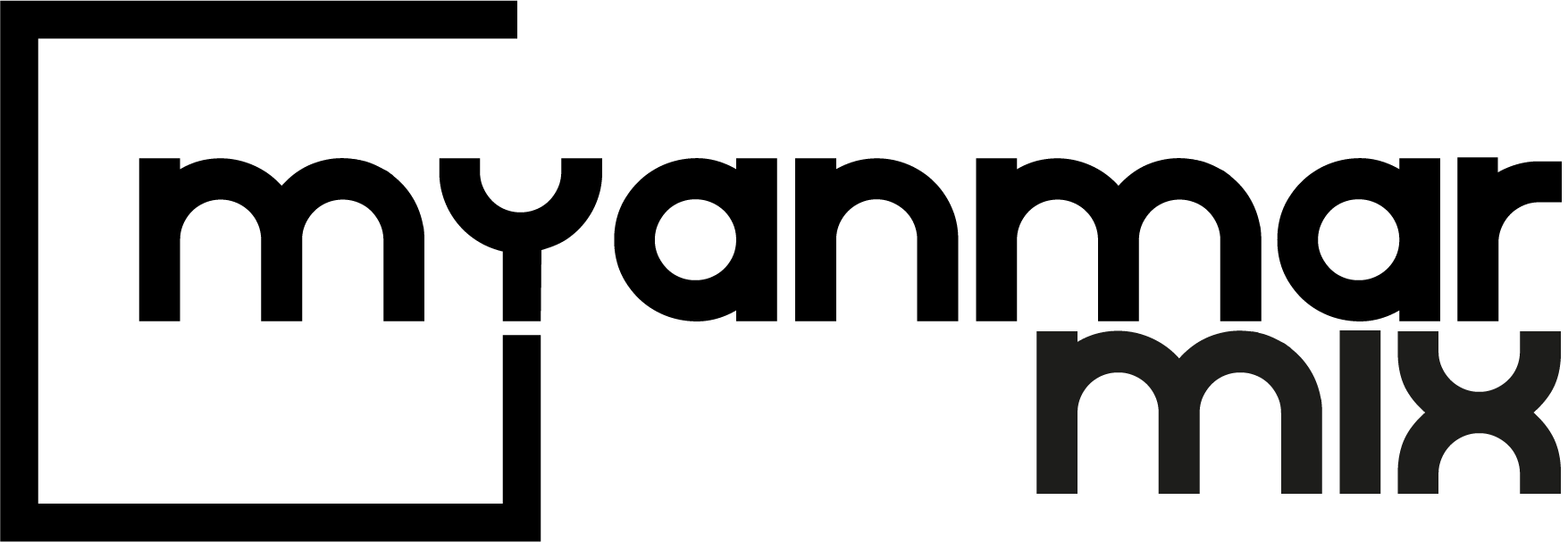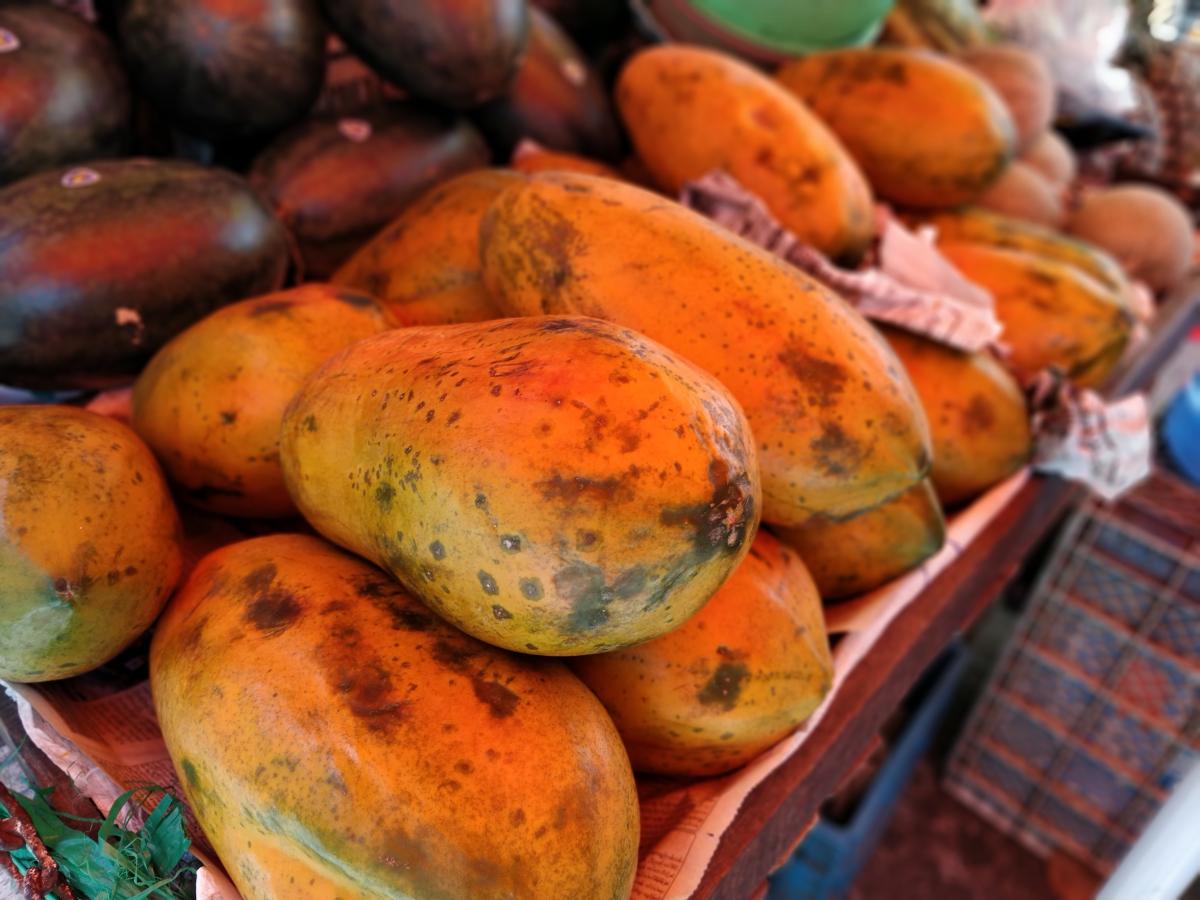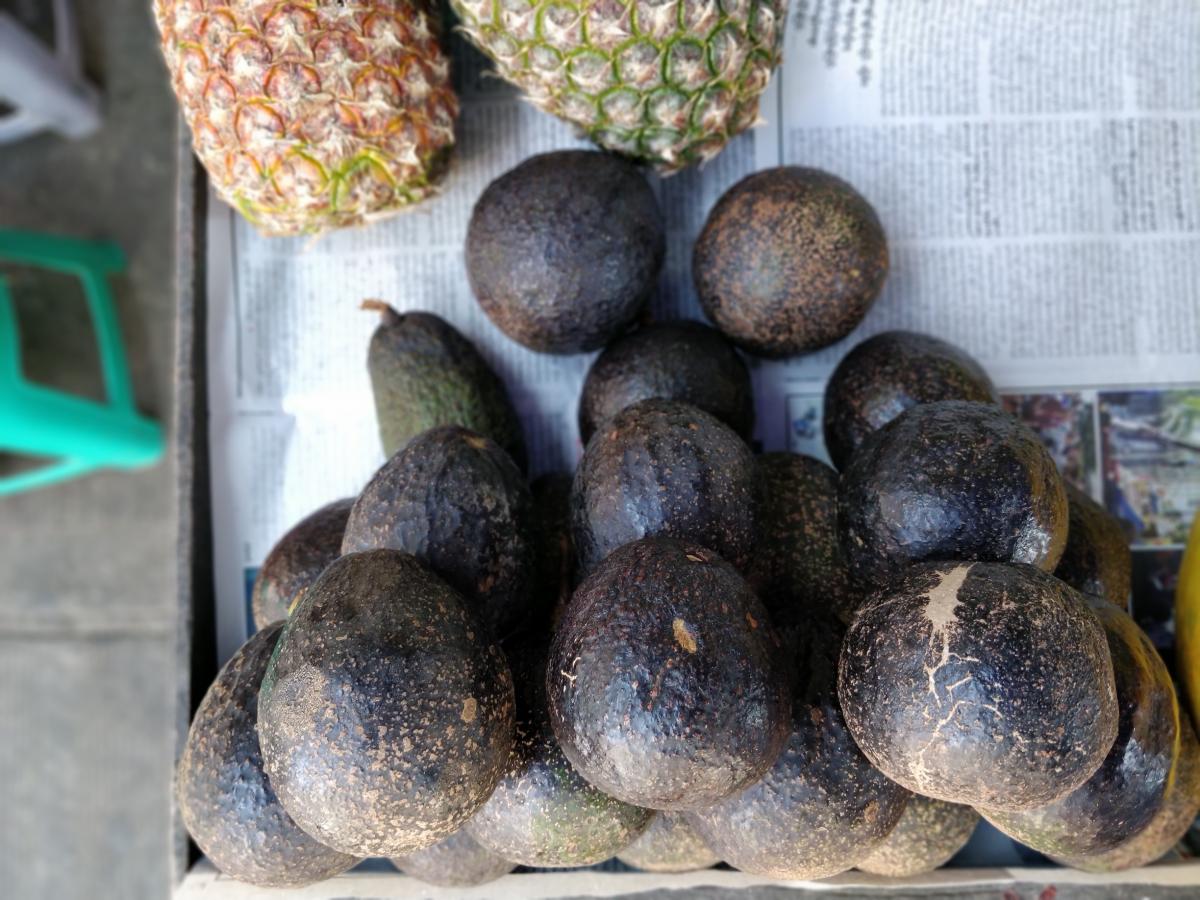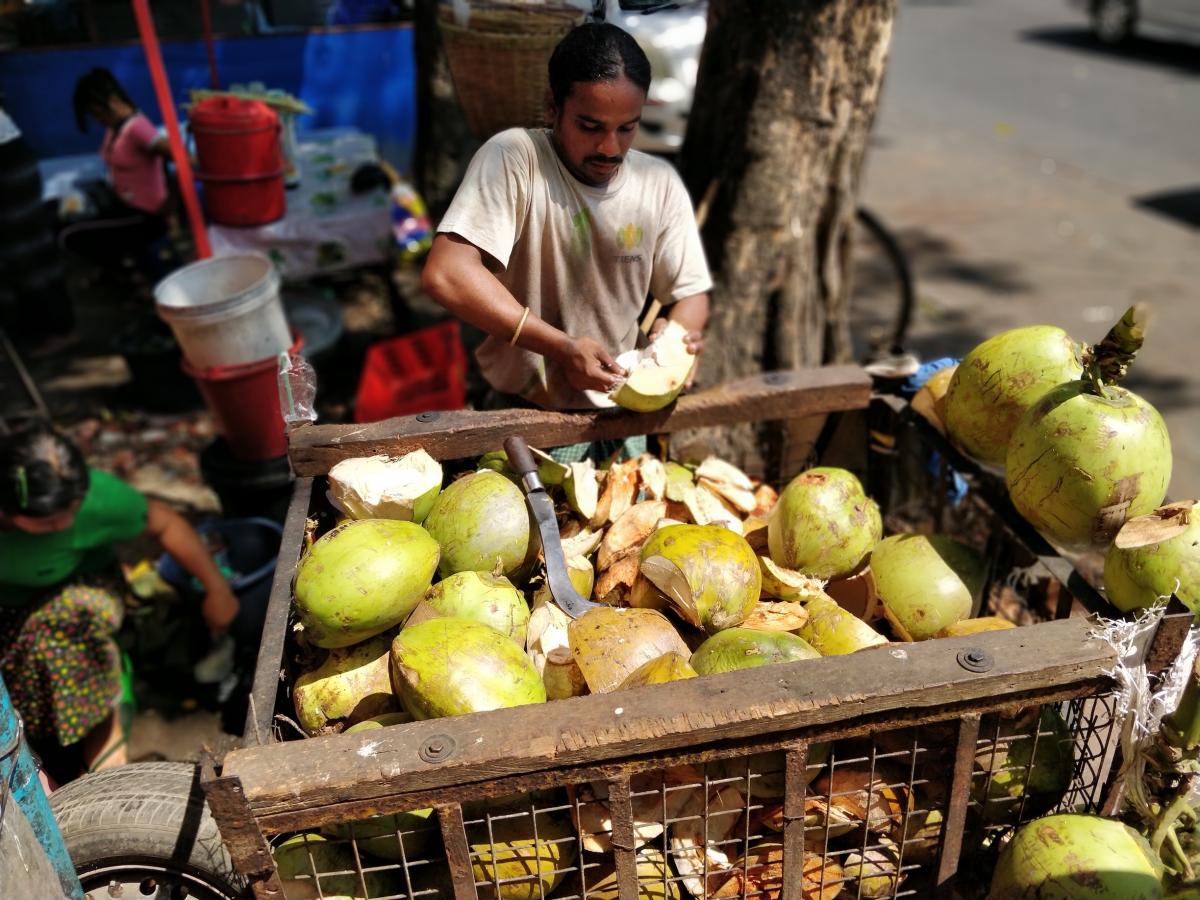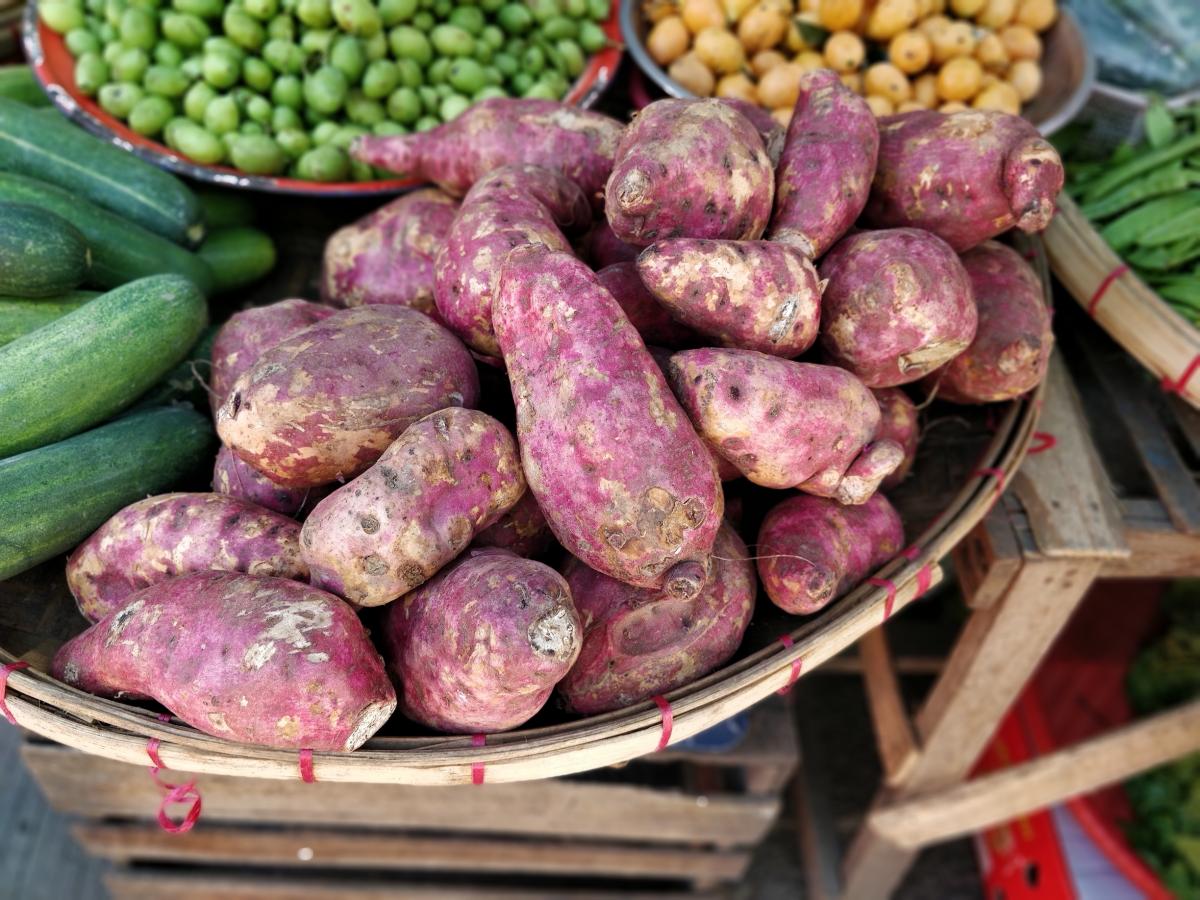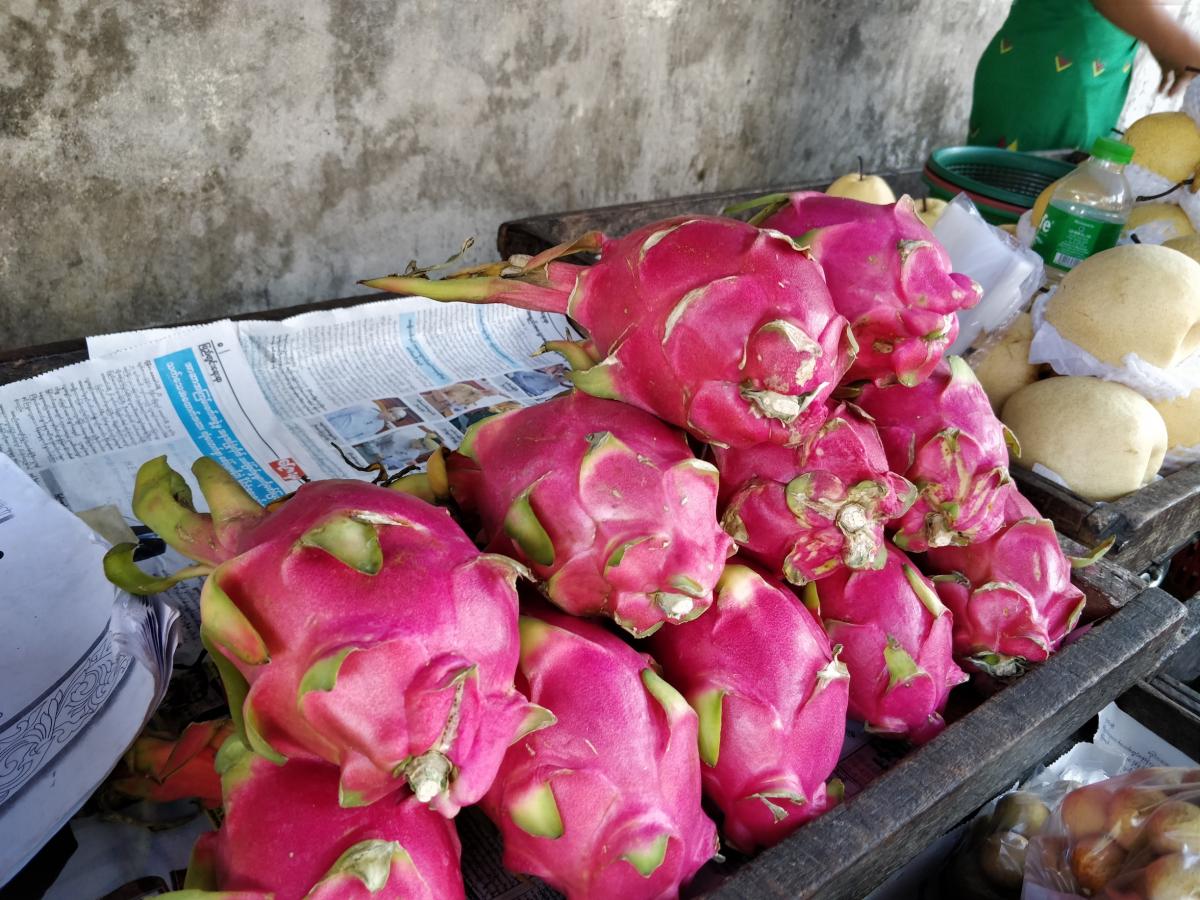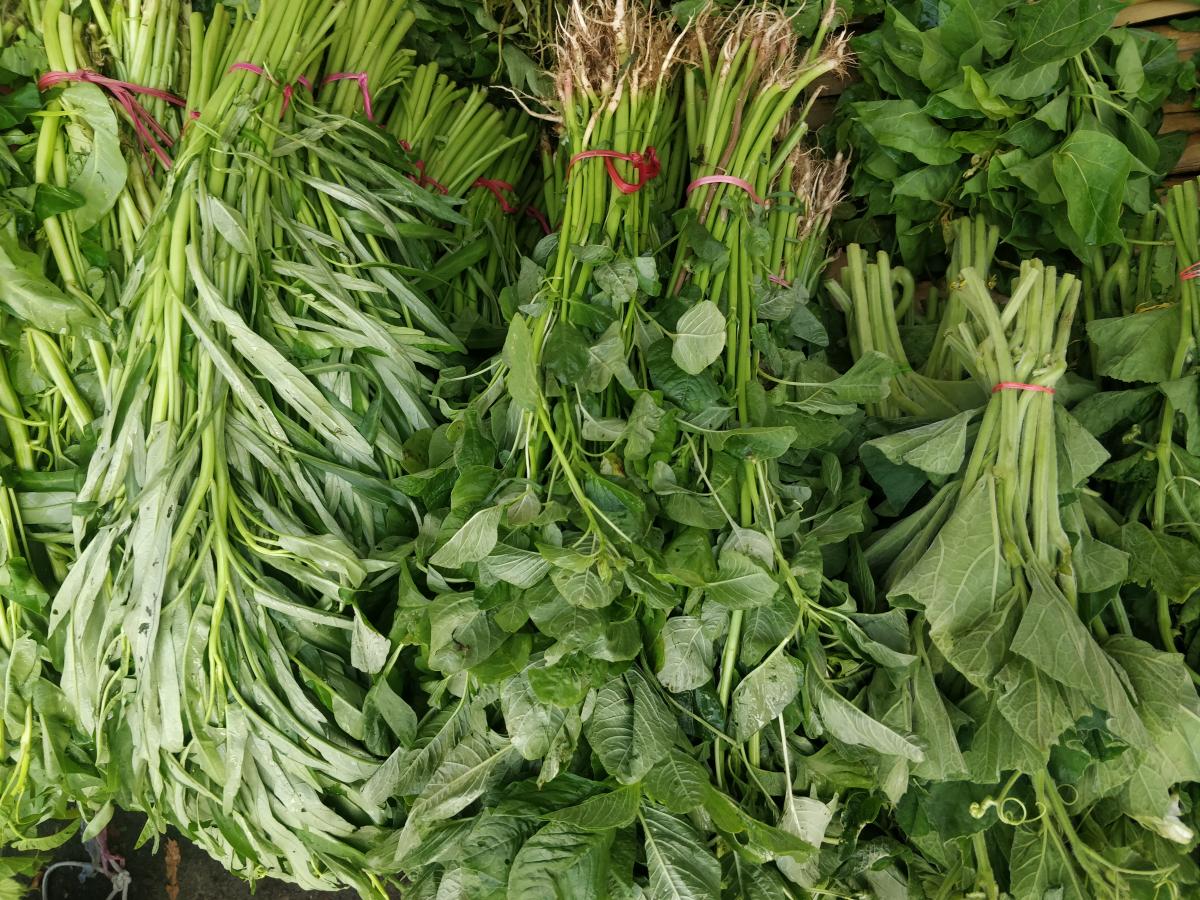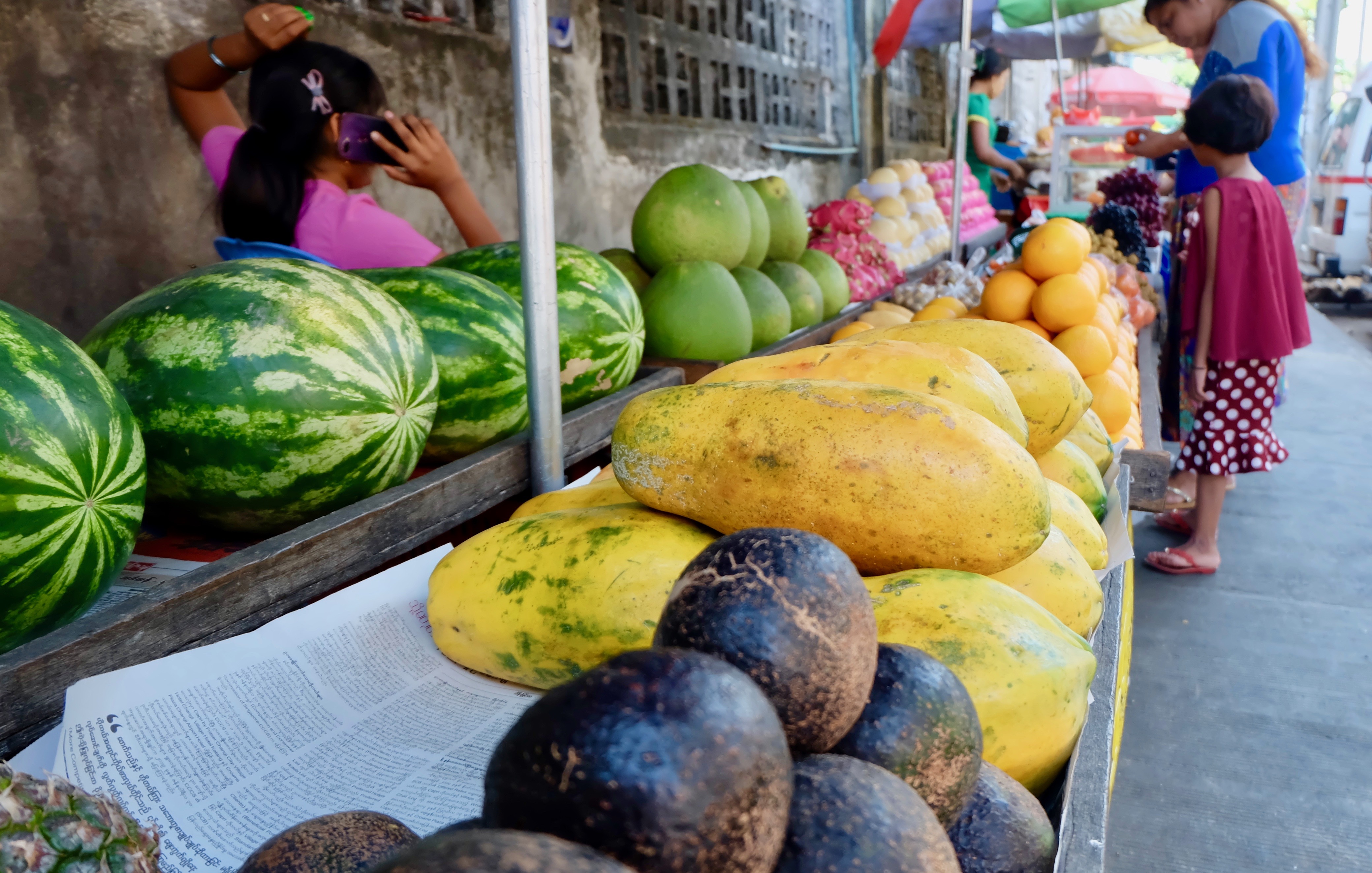
You are never far away from a market, or zay, in Yangon.
Vendors sprawl out their fresh produce on mats and stack them up on tables, creating vibrant splashes of colour that weave through alleys and streets.
The wide choice of fruit and vegetables brought in fresh from the countryside means your average zay is teeming with shoppers.
Thiri Mingalar Market in Sanchaung Township is a good example. On offer are nutritious ‘superfoods’ that have become a staple of hipster cafes, except at the zay you don’t have to pay through the nose. Here’s six of the healthiest fruit and vegetables you can buy.
Papaya
In Burmese papaya is called thin baw thee, which means ‘ship fruit’ and its laden with vitamins and antioxidants that have all sorts of benefits.
Its ingredients neutralize free radicals, which damage cells in the body, and are high in vitamins C and A. The fruit is touted to help prevent cancer, improve digestion, reduce inflammation, and protect your skin.
Plus, a ripe papaya tastes delicious and goes great with smoothies, salads, desserts, and yoghurt. One large fruit will set you back 1,500-2,000 kyats (about US$1) in Yangon.
Avocado
Avocados are abundant from October to February in Myanmar where they have become a milkshake favourite.
The rich and creamy fruit (it’s classified as a berry) is full of healthy fats that make you feel satiated, and some studies have shown them to reduce cholesterol levels, meaning you are less likely to die of heart disease.
It’s also one of the rare fruits that packs protein and is high in antioxidants, including lutein and zeaxanthin, which are important for eye health and lower your risk of cataracts. In a street market one avocado cost roughly 500-800 kyats (33-53 cent).
Coconut
Vietnamese monk Ong Dao Dua allegedly lived off coconuts alone for three years. Though we are not advising that, the fruit has countless benefits and is ubiquitous in lower Myanmar.
Its water, milk and meat are a source of electrolytes for energy and protein for muscle regeneration. Other positives such as iron, ascorbic acid and selenium can improve your heart, skin and bone health.
Buy one for about 1,000 kyats (0.66 cent), get hydrated and then ask the vendor to crack it open for you.
Sweet potato
With the current craze for low-carb diets, pastas, breads, potatoes and white rice have become the enemy. But the sweet potato is your nutrient-dense friend.
The starchy root vegetable is rich in fiber, vitamins, and minerals including similar antioxidants to the papaya—the ones that protect you from free radical damage and chronic disease.
Sweet potatoes also contribute to a healthy gut and are a source of beta-carotene, which can be converted to vitamin A and help boost your immune system. Buy them readily steamed or raw for about 500 kyats (53 cent) for two.
Dragon fruit
Dragon fruit’s insipidness falls short of its exotic look, but the vitamins packed into the low-calorie fruit are a good reason to eat it.
Called ‘dragon horn fruit’ in Burmese because of its long front that points up as the plant grows, the fruit helps hit your daily fiber, vitamin C, iron and magnesium needs.
Spinach
As Popeye attested, this leafy vegetable does wonders. You can eat it from a can like the old sailor preferred, but raw or cooked is just as good.
Its high fibre content is good for digestion, and all the other goodies—vitamins C and K, nitrates, folic acid, iron and calcium—help the body in a range of ways.
These include regulating blood pressure, fighting the aging process, and reducing the risk of cancer and diabetes: all for about 300 kyats (20 cent) per bunch.
Basically, it may stop you from getting ill. One piece costs about 1,500 kyats ($1).
